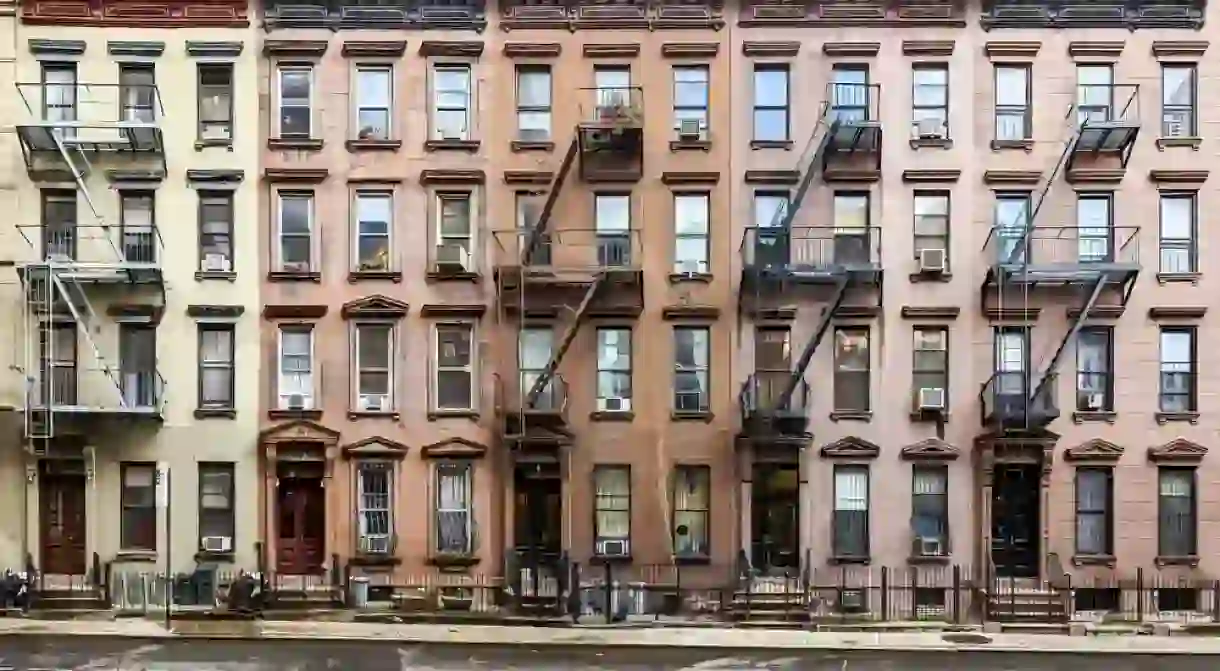The 17 Best Things to See and Do in Harlem, New York City

Harlem is a unique neighborhood of New York City, known famed for its thriving music scene and African American heritage. It’s awash with cultural institutions that have been significant in defining NYC and the US at large. From the talent-incubating Apollo Theater to the canon-redefining Studio Museum – these are the best things to do in Harlem during your next visit.
Located north of Central Park in Manhattan, Harlem has long been a creative hub. The cultural renaissance that followed the Great Migration of the 1920s brought new influences and talent to the area, which became known for the arts, music, fashion and soul food. While the neighborhood might have changed in recent times, it’s still got a real buzz about it. Below, explore 16 of the best things to do and see in New York’s Harlem.
Apollo Theater
Architectural Landmark

This legendary theater, opened in 1914, has launched careers and popularized genres through its devotion to showcasing black talent. The Apollo’s greatest gift to culture is its famous Amateur Nights, which began in 1934. Over the years, this showcase has lent its stage to such royalty as James Brown, Ella Fitzgerald, Sammy Davis Jr, Billie Holiday and Lauryn Hill, who can all undoubtedly credit part of their success to the platform. The programming at the Apollo also brought forms such as jazz, swing, R&B, gospel, blues and soul to a larger audience, and today the theater continues to host comedic, educational and musical events. Amateur Nights are still hosted each Wednesday. Tickets can be purchased here.
Red Rooster
Restaurant, Soul Food

El Museo del Barrio
Museum, Store

The Studio Museum in Harlem, New York
Museum
Sylvia's Restaurant
Restaurant

For close to 60 years, Sylvia’s Restaurant has been a staple of the neighborhood thanks to its Southern comfort food. The menu has all the classics covered, from fried chicken and waffles and barbecue short ribs, to catfish and peach cobbler, and you can even tuck in while singers perform during weekly events including the packed Gospel Brunch Sundays and Live Music Wednesdays. A popular spot among politicians, Presidents Bill Clinton and Barack Obama have dined here, as well as Senator Bernie Sanders, Jesse Jackson and Al Sharpton. Sylvia’s features on the Soul of Harlem Walking Tour.
Central Park Conservatory Gardens
Park

Graffiti Hall of Fame
Art Gallery
Harlem Haberdashery
Store
Harlem Haberdashery is a family-run boutique that is the retail extension of 5001 Flavors, a custom clothing company that began more than 25 years ago. Its style favors colorful three-piece suits, all-white ensembles and oversized hats. Celebrities, including DJ Khaled, The Notorious BIG, Jay-Z and LeBron James, have all worn pieces from 5001 Flavors. The shop, which celebrates the spirit of Harlem in the 1970s and ’80s, isn’t just for celebrities, offering ready-to-wear options in men’s and women’s styles.
Bill's Place
Music Venue
Opened in 2006 by musician Bill Saxton, Bill’s Place traces its roots to the Prohibition era. Visitors take a trip back in time to the Harlem Renaissance with its cozy, elbow-touching speakeasy space. Saxton, a world-renowned saxophonist, leads the Harlem All Stars on Friday and Saturday nights, with an early (8pm) and late (10pm) show each evening. Over the years, legendary performers including Billie Holiday, Fats Waller and Willie ‘The Lion’ Smith have all graced this parlor.
Langston Hughes House
Building
Harlem Renaissance leader Langston Hughes lived in East Harlem from 1947 to 1967. His 1869-built brownstone at Fifth Ave and 127th Street is now on the National Register of Historic Places and the home of Harlem nonprofit I, Too Arts Collective. Explore the home of a legendary artist while supporting those who he inspired at events including public readings and writing workshops. The Langston Hughes House features on the Soul of Harlem Walking Tour.
Tuck into Mexican food at Taco Mix
Canteen, Mexican
The ethic diversity of East Harlem is reflected in its cuisine. A hot favorite is Taco Mix, an authentic Mexican taqueria that locals swear serves the best tacos in New York City. Tortas and cemitas come with an exciting selection of fillings – try the “Norteña-style,” which includes both steak and chorizo, plus a load of other tasty morsels such as mozzarella, avocado and jalapeños. Recommended by Julia Goicochea
Browse the antiques at Demolition Depot
Monastery, Store
Visit the Museum of the City of New York
Museum, Library
Stop for lunch at Ricardo Steakhouse
Restaurant
Having opened in 2004, Ricardo Steakhouse has earned its place as a pillar of the Harlem restaurant scene. The cuts, including a classic New York strip and Ricardo’s fan-favorite T-bone steak, are the only ones of a steakhouse standard to be found around here. An in-house DJ, decor by local artists and made-to-order brunch drinks, like the watermelon mimosa, remind diners they’re in East Harlem, which has made this steakhouse its own. Recommended by Julia Goicochea
Share a thin-crust pie at Patsy’s Pizzeria
Pizzeria, Italian

Patsy’s Pizzeria on First Avenue has been serving East Harlem since 1933, when it perfected the coal-fired pie that would bring in Frank Sinatra, Joe DiMaggio, Francis Ford Coppola, and generations of food lovers. Although the original Patsy, Italian-American Pasquale Lancieri, died in the 1970s, his delicious thin-crust pizzas live on. There’s a sauceless “white pie” pizza, loaded with ricotta and mozzarella, and an 18-inch square pizza among the classics. Recommended by Julia Goicochea
Soak up the atmosphere at La Marqueta
Market
The National Jazz Museum in Harlem, New York
Museum
This is an updated version of a story originally written by Ashlyn Grisetti. Michael LoRé contributed additional reporting
to this article.













